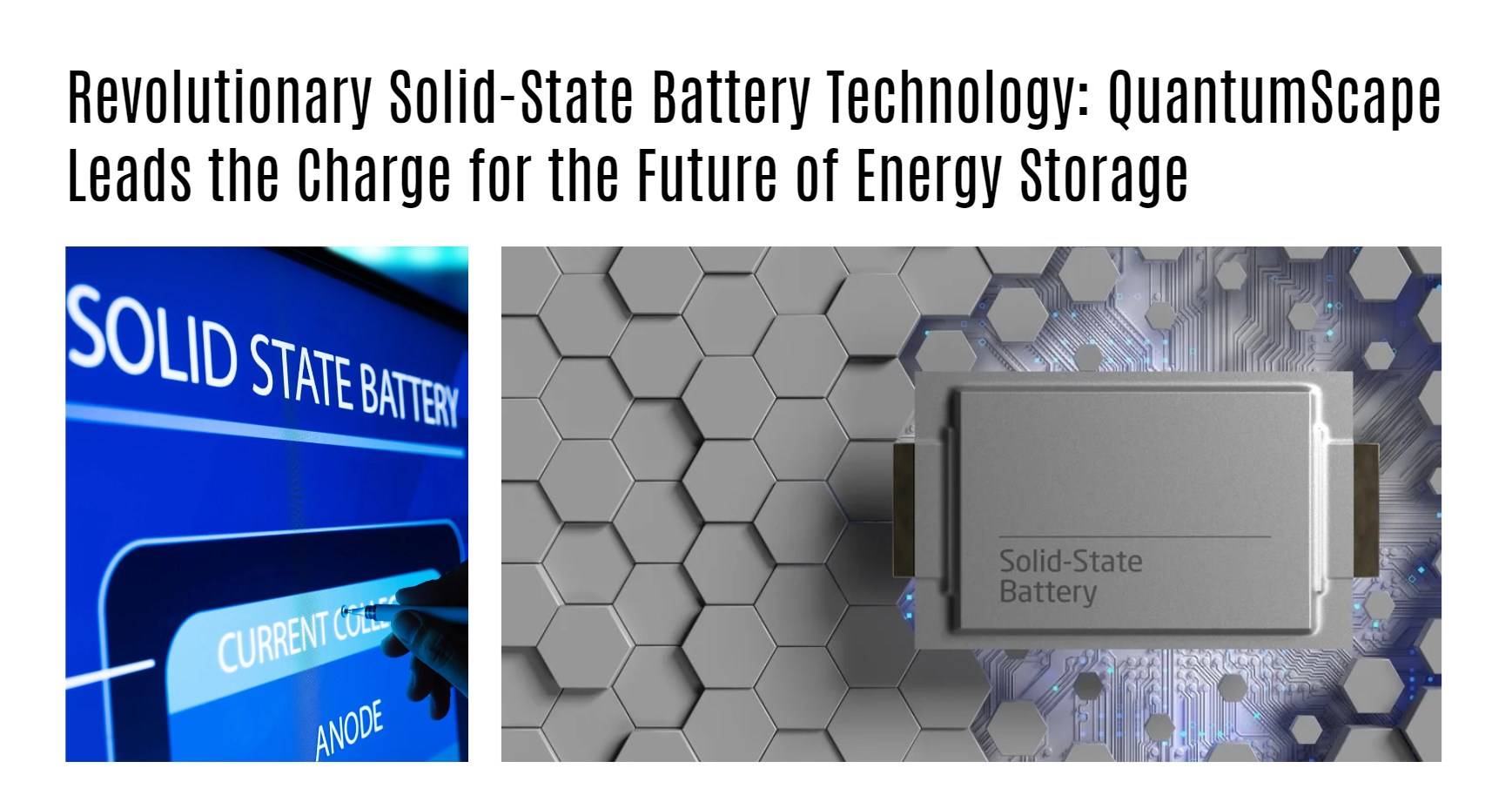QuantumScape is at the forefront of solid-state battery technology, promising significant advancements in energy storage for electric vehicles (EVs). This article delves into the company’s innovations, partnerships, performance metrics, and the challenges it faces as it seeks to revolutionize the battery market.
What is QuantumScape and what do they specialize in?
QuantumScape is a California-based company focused on developing solid-state lithium-metal batteries. Founded in 2010, it aims to create batteries that offer higher energy density, faster charging times, and improved safety compared to traditional lithium-ion batteries. The company has garnered significant attention and investment, including backing from Bill Gates and a strategic partnership with Volkswagen.Chart: Overview of QuantumScape
| Aspect | Detail |
|---|---|
| Founded | 2010 |
| Headquarters | San Jose, California |
| Key Investors | Bill Gates, Volkswagen |
| Focus | Solid-state lithium-metal batteries |
How does QuantumScape’s solid-state battery technology work?
QuantumScape’s technology replaces the liquid electrolyte found in conventional batteries with a solid electrolyte. This innovation allows for the use of a lithium-metal anode, which significantly increases energy density while reducing fire risk. The solid electrolyte also enhances the battery’s lifespan by preventing dendrite formation, a common issue in traditional lithium-ion batteries.Chart: Comparison of Battery Technologies
| Feature | Traditional Lithium-Ion | QuantumScape Solid-State |
|---|---|---|
| Electrolyte | Liquid | Solid |
| Anode | Graphite or silicon | Lithium-metal |
| Energy Density | Moderate | High |
| Safety | Moderate risk of fire | Lower risk |
Why is the partnership with Volkswagen significant?
The partnership with Volkswagen is crucial for QuantumScape as it provides access to substantial resources and manufacturing capabilities. Volkswagen aims to integrate QuantumScape’s solid-state batteries into its EV lineup, which could accelerate the commercialization of this technology. The collaboration includes plans for large-scale production, targeting up to 80 GWh annually.
What performance metrics have been achieved by QuantumScape?
QuantumScape has reported impressive performance metrics during testing:
- Cycle Life: The solid-state cells have shown over 1,000 charging cycles while retaining more than 95% capacity.
- Energy Density: Prototypes have demonstrated energy densities exceeding 1,000 Wh/L.
- Fast Charging: The technology allows for rapid charging capabilities that can charge from 10% to 80% in under 15 minutes.
Chart: Performance Metrics
| Metric | Value |
|---|---|
| Cycle Life | Over 1,000 cycles |
| Energy Density | Exceeds 1,000 Wh/L |
| Fast Charging | 10% to 80% in under 15 minutes |
What are the future production goals for QuantumScape?
QuantumScape aims to begin commercial production of its solid-state batteries by 2024. The company plans to scale up its manufacturing processes significantly to meet the growing demand for EV batteries. They are working towards producing enough batteries annually to power over one million electric vehicles.
How do QuantumScape batteries compare to traditional lithium-ion batteries?
QuantumScape’s solid-state batteries offer several advantages over traditional lithium-ion options:
- Higher Energy Density: Allowing for longer ranges on a single charge.
- Improved Safety: Reduced risk of fire due to the absence of liquid electrolytes.
- Longer Lifespan: Enhanced cycle life means fewer replacements over time.
What challenges does QuantumScape face in commercialization?
Despite its advancements, QuantumScape faces several challenges:
- Manufacturing Scale-Up: Transitioning from prototypes to mass production requires overcoming technical hurdles.
- Cost Competitiveness: Ensuring that solid-state batteries can be produced at a cost-effective price point compared to existing technologies.
- Market Acceptance: Gaining trust from manufacturers and consumers who may be hesitant to switch from established battery technologies.
Buy Wholesale Battery Tips
For buyers looking to purchase wholesale batteries or place OEM orders, partnering with a reputable manufacturer like Redway Battery is advisable. With over 13 years of experience in lithium battery production, Redway offers high-quality products tailored to customer specifications. To make OEM orders:
- Identify your specific requirements (capacity, size).
- Contact Redway’s sales team with your specifications.
- Review samples before placing bulk orders.
This process ensures you receive reliable products that meet your needs.
Industrial News
The EV battery market continues to evolve rapidly as manufacturers like QuantumScape innovate their product offerings. Recent advancements include new battery chemistries that enhance performance while reducing costs. As competition intensifies, companies are expanding their production capacities to meet surging demand from automakers worldwide.
Redway Expert Views
“QuantumScape’s approach to solid-state technology could redefine the EV battery landscape,” states an expert from Redway Battery. “Their focus on safety and efficiency aligns perfectly with industry trends towards sustainable energy solutions.”
FAQ Section
- What is QuantumScape known for?
QuantumScape specializes in developing solid-state lithium-metal batteries that promise higher energy density and improved safety. - What advantages do solid-state batteries have over traditional ones?
They offer higher energy density, faster charging times, and enhanced safety due to the absence of liquid electrolytes. - When does QuantumScape plan to start commercial production?
QuantumScape aims to begin commercial production by 2024. - What challenges does QuantumScape face?
Challenges include scaling up manufacturing processes, ensuring cost competitiveness, and gaining market acceptance. - How do I choose a reliable supplier for EV batteries?
Look for quality certifications, product range, customer support reputation, and industry experience when selecting a supplier.



